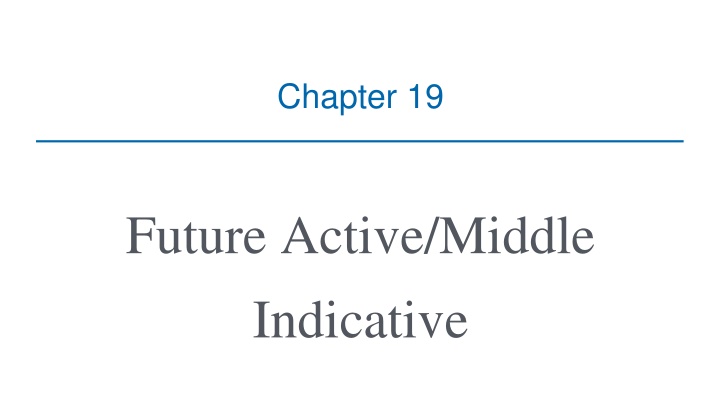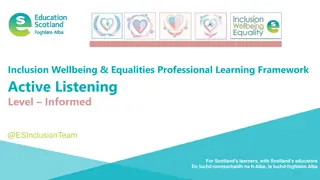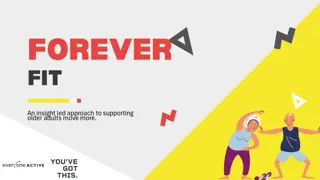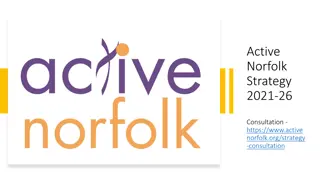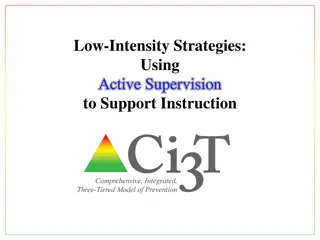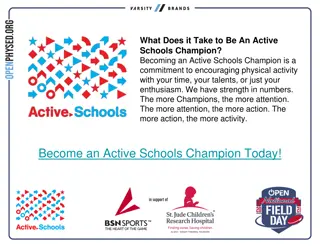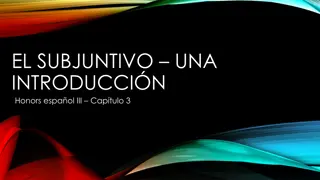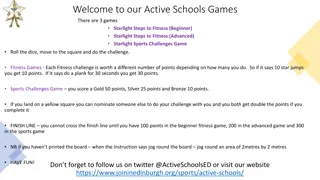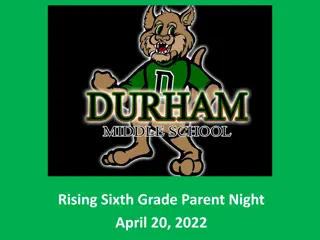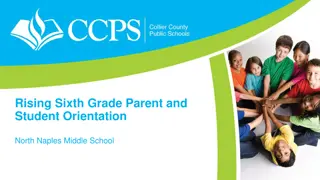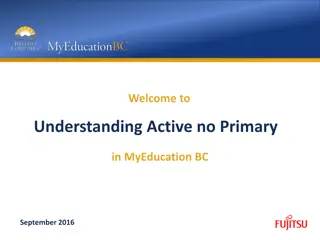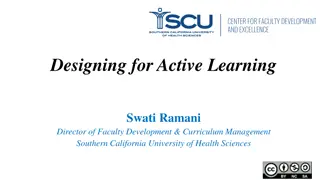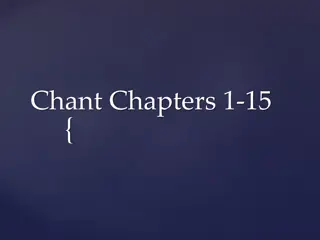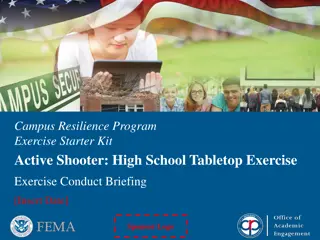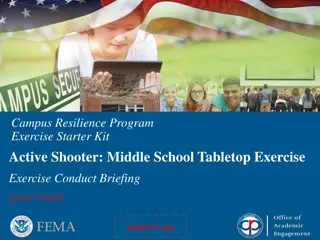Future Active/Middle Indicative
Exploring the active and middle indicative verb forms within future tense in this chapter. Gain insights into the usage and nuances of these verbs through detailed explanations and examples. Understand how to properly conjugate and apply future tense verbs in different contexts. Enhance your language skills by mastering the intricacies of these verb forms.
Download Presentation

Please find below an Image/Link to download the presentation.
The content on the website is provided AS IS for your information and personal use only. It may not be sold, licensed, or shared on other websites without obtaining consent from the author.If you encounter any issues during the download, it is possible that the publisher has removed the file from their server.
You are allowed to download the files provided on this website for personal or commercial use, subject to the condition that they are used lawfully. All files are the property of their respective owners.
The content on the website is provided AS IS for your information and personal use only. It may not be sold, licensed, or shared on other websites without obtaining consent from the author.
E N D
Presentation Transcript
Chapter 19 Future Active/Middle Indicative
English 1. Future formed from present principal part 2. Will (or shall for first person)
Greek Future time (not aspect): will Aspect: undefined
Verbal Root Present stem Future stem Aorist stem
Seven Greek Tenses 1. 2. 3. 4. 5. 6. 7. present imperfect future active aorist active perfect active perfect m/p aorist passive I love I was loving I will love I loved I have loved I have been loved I was loved
Tense Stems , , , , , Principal parts Parts of speech Tense forms
Tense Stems , , , , ,
Pattern 1 (of 4): Roots not altered 1. Stems ending in an iota or upsilon * 2. Contract verbs * 3. Stems ending in a stop *
Future Active Indicative Future active tense stem + Tense formative ( ) + Connecting vowel + Primary active personal endings + + +
Future Active Indicative I will loose You will loose He will loose - ( ) We will loose You will loose They will loose ( )
Contract Verbs * + + * + + * + +
Square of Stops Labial Velar Dental
Future Middle Indicative Future active tense stem + Tense formative ( ) + Connecting vowel + Primary middle/passive personal endings + + +
Future Middle Indicative I will go You will go He will go We will go You will go They will go
Middle-Only/Deponent Characteristic of a single tense But if middle-only in present, probably in future How know? , Translation Active
I will be You will be He will be We will be You will be They will be
Summary 1. Future time, undefined aspect 2. Pattern 1 verbs (root = present tense form) or Contracts Stop
Summary 3. Tense formative ( ) 4. Primary endings: active or middle/passive 5. Contract verbs, Square of Stops 6. Middle-only/Deponent
Master Verb Chart Tense Aug/ Redup Tense stem Tense form. Conn. vowel Personal endings 1st sg paradigm Present act Present m/p Future act Future mid pres pres fut act fut act / / / / prim act prim m/p prim act prim m/p
Vocabulary , - ,
Vocabulary , - ,
Vocabulary , - , -
Vocabulary , - ,
Vocabulary , -
Vocabulary , - , -
